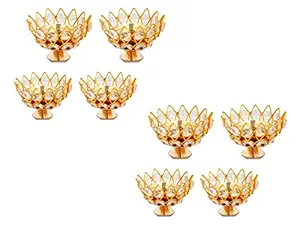परिचय
गंगा, यमुना और पौराणिक सरस्वती नदियों का संगम, जिसे त्रिवेणी संगम भी कहा जाता है, हिंदू धर्म में अत्यधिक सांस्कृतिक, आध्यात्मिक और ऐतिहासिक महत्व रखता है। भारत के उत्तर प्रदेश में प्रयागराज (पूर्व में इलाहाबाद) में स्थित, यह पवित्र स्थल दुनिया भर से लाखों भक्तों, संतों और तीर्थयात्रियों को आकर्षित करता है, खासकर कुंभ मेले जैसे आयोजनों के दौरान। इन तीनों नदियों का मिलन आध्यात्मिक एकता और दैवीय पवित्रता का प्रतीक माना जाता है।
नदियाँ और उनका आध्यात्मिक प्रतीकवाद
गंगा: मुक्ति की नदी
हिंदू धर्म में सबसे पवित्र नदी मानी जाने वाली गंगा को स्वर्ग से धरती पर अवतरित हुई देवी माना जाता है। माना जाता है कि पापों को शुद्ध करने वाली गंगा में डुबकी लगाने से व्यक्ति के पिछले कर्म धुल जाते हैं और मोक्ष (मुक्ति) का मार्ग प्रशस्त होता है। भगवान शिव और वैदिक ऋचाओं के साथ इसका जुड़ाव इसकी पवित्रता को और अधिक रेखांकित करता है।
यमुना: करुणा की नदी
यमुना को यम (मृत्यु के देवता) की बहन और भगवान कृष्ण की पत्नी के रूप में पूजा जाता है। प्रेम, करुणा और भरण-पोषण से जुड़ी, यमुना का उत्सव कई हिंदू ग्रंथों में मनाया जाता है। भक्तों का मानना है कि यमुना में स्नान करने से मृत्यु के भय से मुक्ति और शाश्वत शांति मिल सकती है।
सरस्वती: अदृश्य दिव्य
सरस्वती ऋग्वेद में वर्णित एक पौराणिक नदी है, जो ज्ञान, बुद्धिमत्ता और वाक्पटुता का प्रतीक है। हालाँकि यह अब दिखाई नहीं देती है, लेकिन माना जाता है कि यह भूमिगत बहती है और आध्यात्मिक रूप से गंगा और यमुना में विलीन हो जाती है। संगम पर सरस्वती की उपस्थिति संगम में एक अलौकिक और रहस्यमय आयाम जोड़ती है।
त्रिवेणी संगम का महत्व
आध्यात्मिक शुद्धि
त्रिवेणी संगम को आध्यात्मिक शुद्धि प्राप्त करने के लिए एक शक्तिशाली स्थान माना जाता है। हिंदू मान्यता के अनुसार, इन नदियों के विलय से एक अद्वितीय ऊर्जा क्षेत्र बनता है जो शरीर, मन और आत्मा को शुद्ध करता है। तीर्थयात्री अक्सर नकारात्मक कर्मों से छुटकारा पाने के लिए पिंडदान (पितृ तर्पण) जैसे अनुष्ठान करते हैं और पानी में डुबकी लगाते हैं।
मोक्ष का द्वार
शास्त्रों में संगम को मुक्ति का द्वार बताया गया है। ऐसा कहा जाता है कि कुंभ मेले या माघ मेले जैसे शुभ समय के दौरान इस संगम पर डुबकी लगाने से मोक्ष और शाश्वत आनंद मिलता है। कई हिंदू दाह संस्कार के बाद अपनी राख को इसी स्थान पर बिखेरना चाहते हैं।
पौराणिक संबंध
त्रिवेणी संगम की जड़ें हिंदू पौराणिक कथाओं में गहराई से जुड़ी हुई हैं। ऐसा माना जाता है कि समुद्र मंथन के दौरान अमृता की कुछ बूंदें यहां गिरी थीं। यह संगम को दिव्य आशीर्वाद प्राप्त करने के लिए एक पवित्र स्थल बनाता है।
सांस्कृतिक एवं ऐतिहासिक महत्व
तीर्थयात्रा का केंद्र
त्रिवेणी संगम सदियों से एक महत्वपूर्ण तीर्थ स्थल रहा है। यह महाकुंभ मेला, अर्ध कुंभ मेला और माघ मेला जैसे आयोजनों का केंद्र बिंदु है, जिसमें लाखों श्रद्धालु अनुष्ठान करते हैं, भजन गाते हैं और दैवीय कृपा चाहते हैं।
प्राचीन ज्ञान का केंद्र
प्रयागराज प्राचीन काल से ही ज्ञान और विद्या का केंद्र रहा है। ज्ञान के साथ सरस्वती नदी का जुड़ाव इस क्षेत्र में विकसित बौद्धिक और आध्यात्मिक गतिविधियों का प्रतीक है।
कलात्मक प्रेरणा
संगम ने कला, कविता और साहित्य के अनगिनत कार्यों को प्रेरित किया है। यह वैदिक भजनों, पौराणिक ग्रंथों और आधुनिक लेखन में मनाया जाता है, जो एकता, सद्भाव और पवित्रता का प्रतीक है।
वैज्ञानिक परिप्रेक्ष्य
वैज्ञानिक दृष्टिकोण से, नदियों का संगम एक अद्वितीय पारिस्थितिकी तंत्र बनाता है जो जैव विविधता का समर्थन करता है। मीठे पानी की नदियों के मिश्रण का भी गहरा पारिस्थितिक महत्व है, जो क्षेत्र की वनस्पतियों और जीवों को प्रभावित करता है।
त्रिवेणी संगम के दर्शन
प्रदर्शन करने के लिए अनुष्ठान
पवित्र डुबकी: आध्यात्मिक शुद्धि के लिए आवश्यक माना जाता है।
पिंडदान: पूर्वजों का सम्मान करने का एक अनुष्ठान।
आरती और प्रार्थना: सुबह और शाम को नदियों में अर्पित की जाती है।
घूमने का सबसे अच्छा समय
जबकि त्रिवेणी संगम साल भर सुलभ रहता है, महाकुंभ मेले या माघ मेले के दौरान यात्रा एक अद्वितीय आध्यात्मिक अनुभव प्रदान करती है।
पहुँचने के लिए कैसे करें
प्रयागराज सड़क, रेल और हवाई मार्ग से अच्छी तरह से जुड़ा हुआ है। शहर से नावों या सड़क मार्ग से संगम तक आसानी से पहुंचा जा सकता है।
निष्कर्ष
त्रिवेणी संगम पर गंगा, यमुना और सरस्वती नदियों का संगम एक भौगोलिक स्थिति से कहीं अधिक है। यह एक आध्यात्मिक शक्तिपीठ है, भारत की समृद्ध सांस्कृतिक विरासत का प्रमाण है और लाखों लोगों के लिए आशा और विश्वास का प्रतीक है। चाहे कोई दिव्य आशीर्वाद, ऐतिहासिक अंतर्दृष्टि, या सांस्कृतिक संवर्धन चाहता हो, त्रिवेणी संगम प्रेरणा और श्रद्धा का एक शाश्वत स्रोत बना हुआ है।
Introduction to Triveni Sangam
Overview of Triveni Sangam
Triveni Sangam is the sacred confluence of Ganga Yamuna and Saraswati rivers revered by millions of devotees.
Religious Importance
The confluence is considered highly auspicious in Hinduism and is a central location for rituals and spiritual practices.
Location and Geography
Triveni Sangam is located in Prayagraj where the visible rivers Ganga and Yamuna meet and the mythical Saraswati flows underground.
Historical Background
Triveni Sangam has been a pilgrimage site for centuries attracting saints sages and devotees from all over India.
Devotee Participation
Millions of pilgrims visit Triveni Sangam during Kumbh Mela to perform holy dips and seek blessings.
Mythological Significance
Legend of the Rivers
Ganga Yamuna and Saraswati are associated with legends of divine creation and spiritual purification in Hindu mythology.
Story of Triveni
According to mythology the three rivers meet at a single point to bestow spiritual merit and remove sins of devotees.
Spiritual Benefits
Bathing at Triveni Sangam is believed to cleanse sins purify the soul and enhance spiritual growth.
Role in Kumbh Mela
Triveni Sangam becomes the central focus during Maha Kumbh Mela hosting millions of pilgrims for holy rituals.
Devotional Practices
Devotees perform rituals prayers and holy dips to honor the sacred rivers and their spiritual significance.
Holy Rituals at the Confluence
Holy Dips
Ritual bathing at Triveni Sangam is believed to purify the mind and soul offering spiritual merit to participants.
Daily Prayers
Devotees perform daily prayers chant mantras and offer flowers and water to the sacred rivers.
Saint Gatherings
Saints and spiritual leaders gather at Triveni Sangam to bless pilgrims and conduct spiritual discourses.
Offerings and Devotions
Devotees offer milk fruits and sacred items to the rivers as part of their devotional practices.
Cultural Events
Cultural programs devotional songs and spiritual gatherings enhance the experience at the confluence.
Spiritual Significance
Path to Liberation
Bathing at the Triveni Sangam is believed to help devotees achieve spiritual liberation and wash away karmic sins.
Symbolism of Unity
The confluence represents the unity of divine forces and the coming together of multiple spiritual energies.
Faith and Devotion
Devotees strengthen their faith and devotion through participation in rituals prayers and meditation.
Moral and Ethical Lessons
The sacred confluence teaches lessons of humility devotion and respect for nature and divine forces.
Community Bonding
Kumbh Mela at Triveni Sangam fosters social harmony as devotees come together to participate in shared rituals.
Pilgrimage Guide
Travel and Access
Triveni Sangam is easily accessible by road rail and air accommodating pilgrims from across India and abroad.
Accommodation Options
Temporary camps dharamshalas and hotels are arranged to host millions of visitors during Kumbh Mela.
Best Time to Visit
Auspicious bathing dates determined by astrology are the ideal times to attend rituals at Triveni Sangam.
Travel Tips
Devotees are advised to wear comfortable clothing carry light luggage and follow hygiene and safety measures.
Health and Safety
Medical facilities sanitation arrangements and security measures ensure a safe and spiritually fulfilling pilgrimage.
Triveni Sangam is the sacred confluence of Ganga Yamuna and Saraswati rivers revered by millions of devotees.
The confluence is considered highly auspicious in Hinduism and is a central location for rituals and spiritual practices.
Triveni Sangam is located in Prayagraj where the visible rivers Ganga and Yamuna meet and the mythical Saraswati flows underground.
Triveni Sangam has been a pilgrimage site for centuries attracting saints sages and devotees from all over India.
Millions of pilgrims visit Triveni Sangam during Kumbh Mela to perform holy dips and seek blessings.
Ganga Yamuna and Saraswati are associated with legends of divine creation and spiritual purification in Hindu mythology.
According to mythology the three rivers meet at a single point to bestow spiritual merit and remove sins of devotees.
Bathing at Triveni Sangam is believed to cleanse sins purify the soul and enhance spiritual growth.
Triveni Sangam becomes the central focus during Maha Kumbh Mela hosting millions of pilgrims for holy rituals.
Devotees perform rituals prayers and holy dips to honor the sacred rivers and their spiritual significance.
Ritual bathing at Triveni Sangam is believed to purify the mind and soul offering spiritual merit to participants.
Devotees perform daily prayers chant mantras and offer flowers and water to the sacred rivers.
Saints and spiritual leaders gather at Triveni Sangam to bless pilgrims and conduct spiritual discourses.
Devotees offer milk fruits and sacred items to the rivers as part of their devotional practices.
Cultural programs devotional songs and spiritual gatherings enhance the experience at the confluence.
Bathing at the Triveni Sangam is believed to help devotees achieve spiritual liberation and wash away karmic sins.
The confluence represents the unity of divine forces and the coming together of multiple spiritual energies.
Devotees strengthen their faith and devotion through participation in rituals prayers and meditation.
The sacred confluence teaches lessons of humility devotion and respect for nature and divine forces.
Kumbh Mela at Triveni Sangam fosters social harmony as devotees come together to participate in shared rituals.
Triveni Sangam is easily accessible by road rail and air accommodating pilgrims from across India and abroad.
Temporary camps dharamshalas and hotels are arranged to host millions of visitors during Kumbh Mela.
Auspicious bathing dates determined by astrology are the ideal times to attend rituals at Triveni Sangam.
Devotees are advised to wear comfortable clothing carry light luggage and follow hygiene and safety measures.
Medical facilities sanitation arrangements and security measures ensure a safe and spiritually fulfilling pilgrimage.


